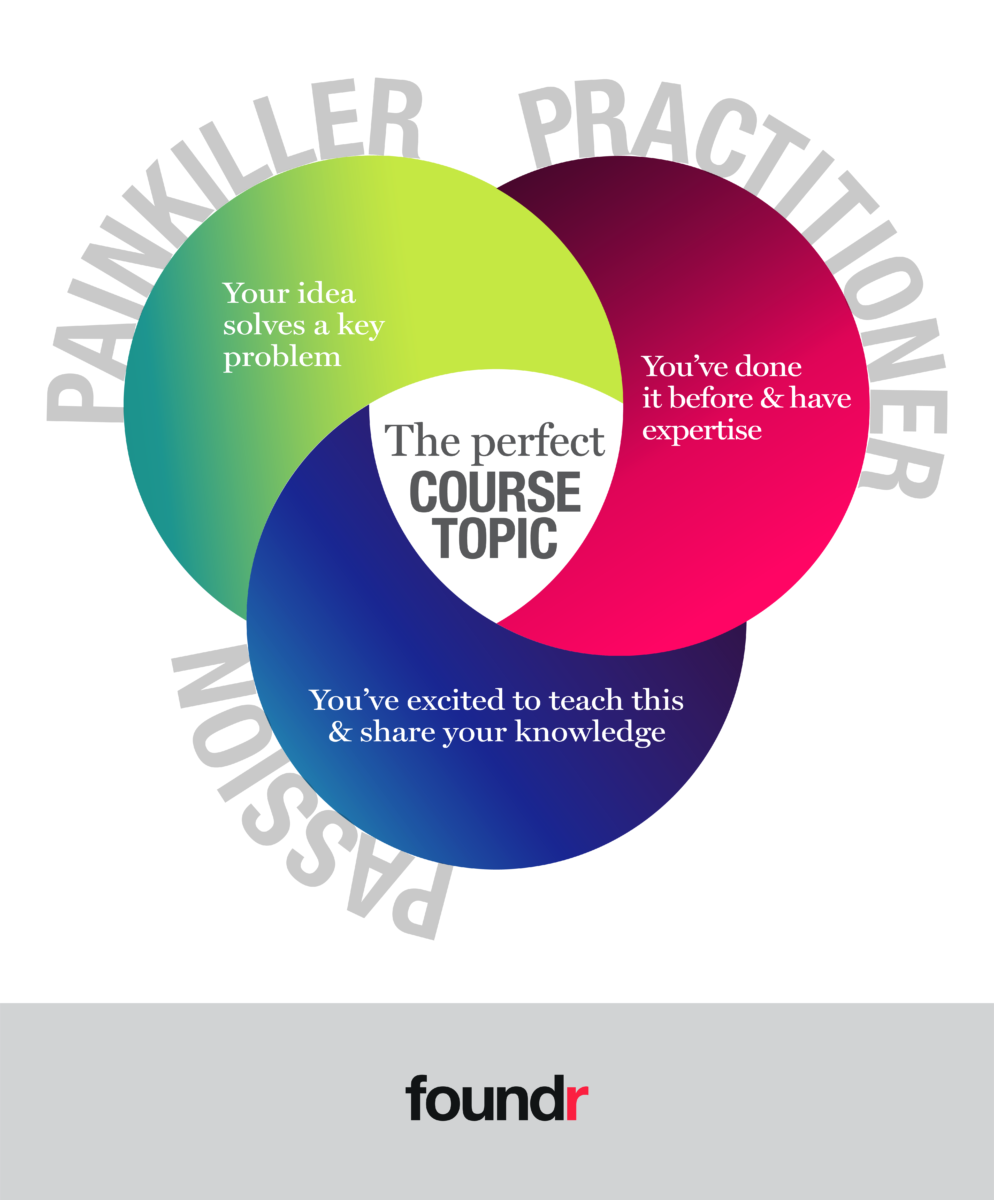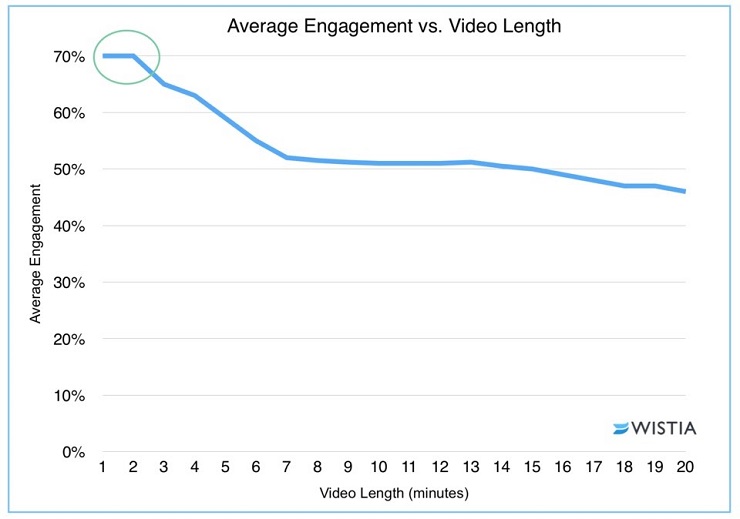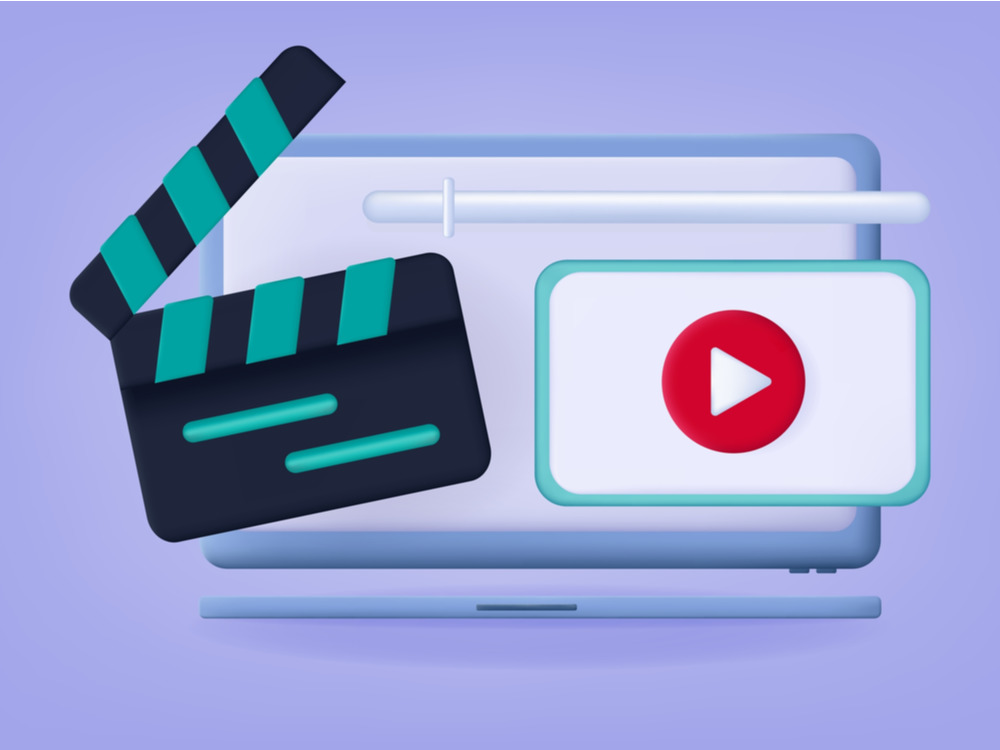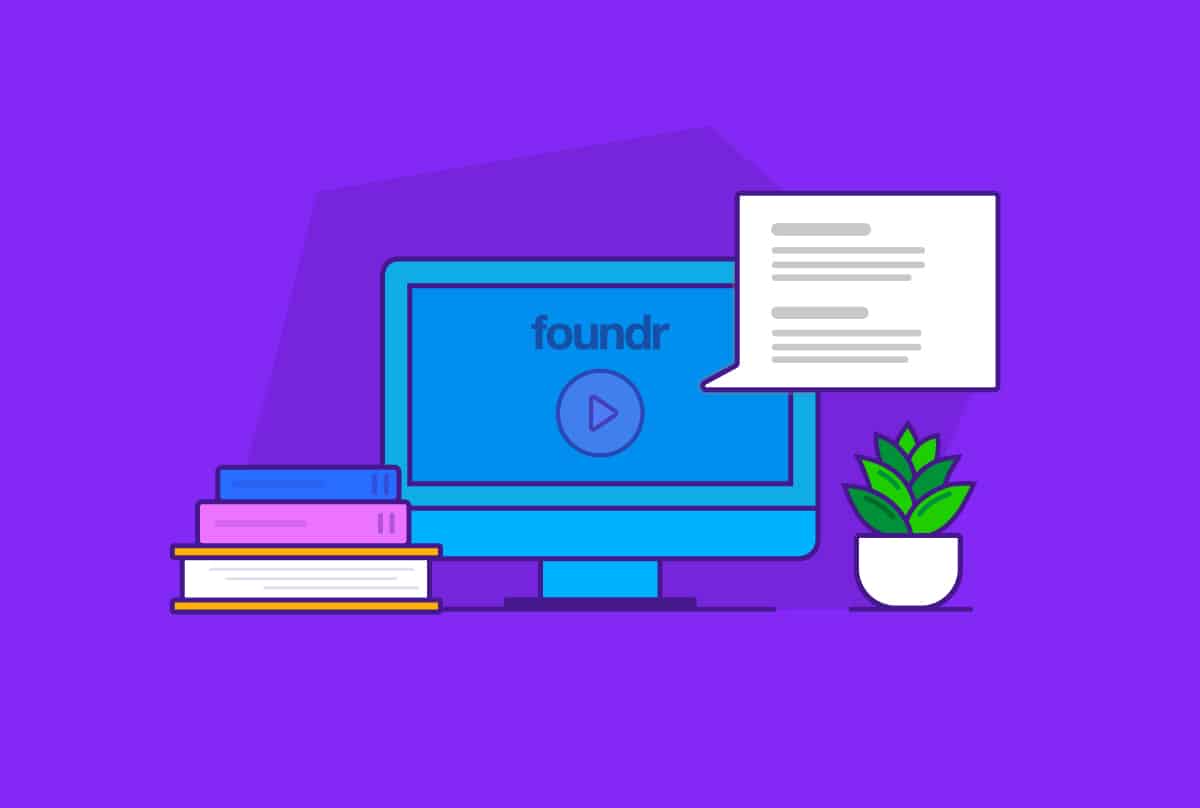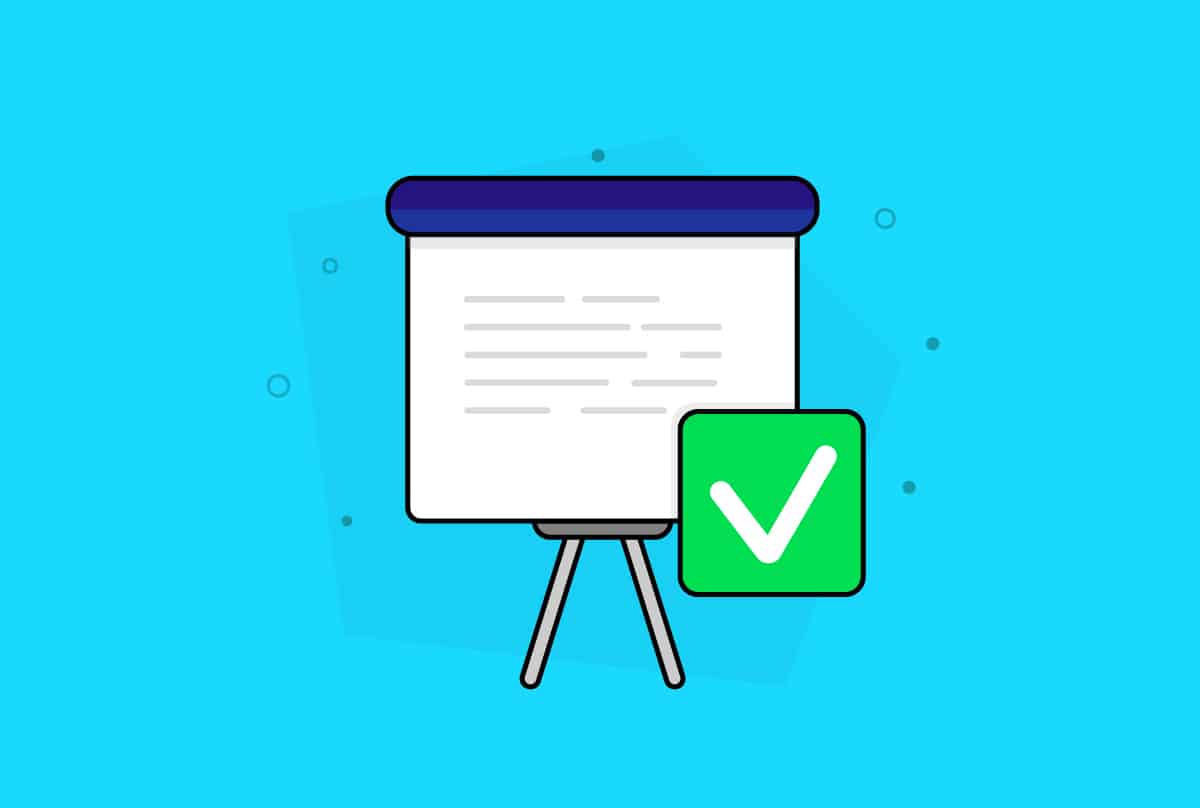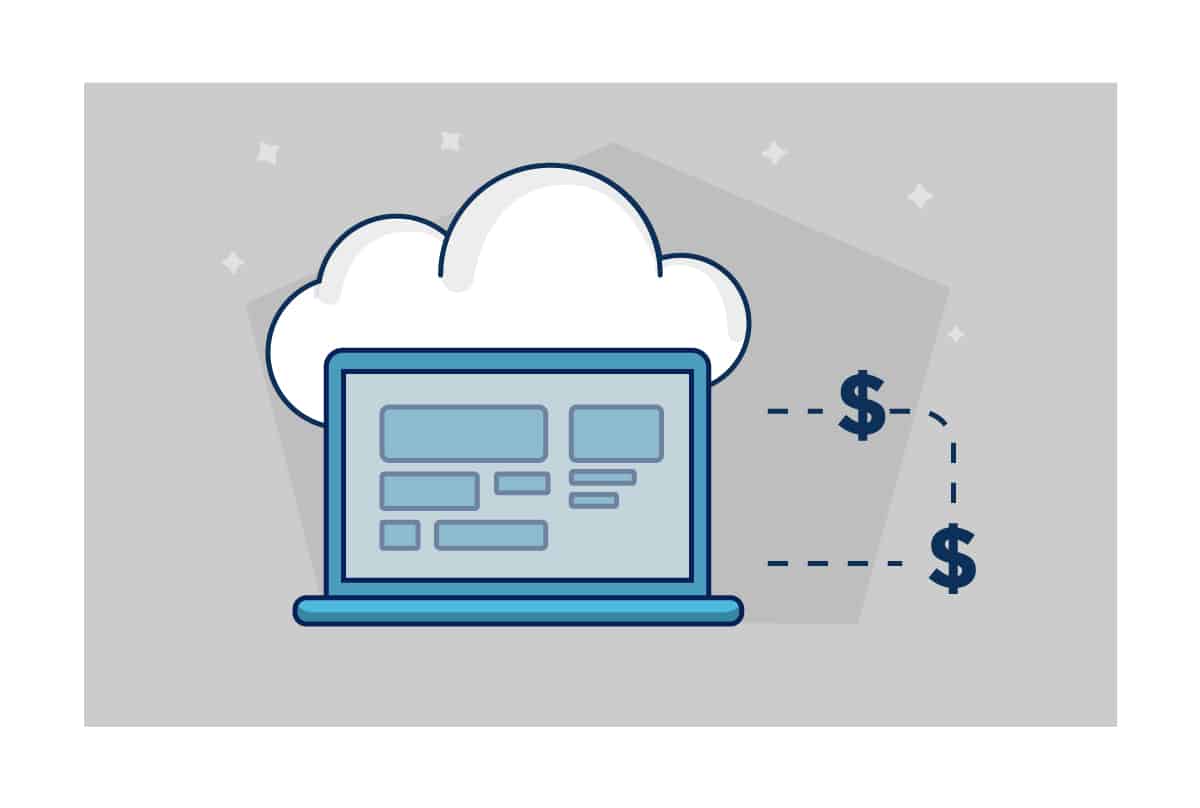Online courses are blowing up in 2020. With the rapid shift to e-learning that was turbo-boosted by the pandemic lockdown, on top of the already-growing edtech industry, it seems that online education is quickly becoming a weekly staple.
As an entrepreneur, how do you develop an online course that sells when there is so much noise out there?
Countless gurus are selling courses about selling courses, but they’ve only done so for their personal brands. They lack the expertise to give you a repeatable framework that works for any topic and niche.
Foundr, on the other hand, boasts a team of experts in creating online course content and marketing those courses, who hail from leading platforms like Skillshare, Mindvalley and Kajabi. Their collective efforts have resulted in over 500,000 student enrollments worldwide.
While the art of teaching isn’t easy, regardless of whether it’s online or in-person, there is a repeatable system for developing an online course that works—for both you, and your customers.
In this article, you’ll get a glimpse behind the scenes at Foundr’s online course development process.
1. Figure Out a Winning Course Topic
A lot of entrepreneurs start by thinking about what they want to teach. This is only half the battle. Or one-fourth, to be specific.
The best way to figure out a winning topic for your online course is to ensure it’s a balance of what you are excited (and qualified) to share, and what your audience actually needs to know.
You can measure it against these four criteria:
- Painkiller: The course topic solves a pain point, recurring challenge, or burning question that your customer is experiencing. Ideally this is one of the top three problems in their business or in their life—something that’s keeping them up at night. If your course is solving a major pain point for your customer, then it will sell. This goes for any product.
- Practitioner: The course topic is something that you personally have expertise in, and can speak to confidently because it’s something you’ve done multiple times. Avoid creating an online course about something you haven’t done before first-hand. The world has enough gurus.
- Passion: The course topic should ideally be something that you’re excited to teach. If you’re passionate about sharing this knowledge, that energy will shine through on-camera, and make your course much more engaging. Conversely, if you’re bored to tears by the topic you’re talking about, your audience will be able to tell that you’re phoning it in.
- Packaging: The course topic should be positioned in a way that uses your customer’s own words. This is important to think about upfront, because you could have two identical courses on the same topic, and one will perform better simply thanks to the packaging.
For the first three criteria you can use Foundr’s step-by-step validation system which is how we validated 12 course ideas without spending a dime. This process will allow you to land on a shortlist of course topics that your customers have pre-purchased before they even exist—which is the ultimate form of validation.
Then once you have this shortlist (or even a finalist), do a quick gut-check:
- Does this topic seem like a true painkiller for my audience?
- Am I a practitioner in this space?
- Am I passionate about teaching this topic?
Seth Godin nods to this idea in his blog about pleasing the three masters. In any business, Godin points out, you must figure out if you’re 1. serving your existing customer base, 2. finding a new customer and making a bigger promise to them, or 3. satisfying the voice in your head and singing the song that you want to sing, “regardless of who wants to hear it.”
In the case of creating online training courses, you should consider how to tick all three boxes.
To nail the fourth piece, packaging, you can then do a few different A/B tests in order to determine what the best positioning is for that topic. Many people do the marketing part after they’ve already produced the course, which is fine—but if you can manage to do it before you even record your course content, it’ll exponentially increase your chances of success. Having a strong idea of your positioning before going into battle will also help guide your whole course content development, which we’ll talk about later in this article.
Tim Ferriss’ book ‘The 4-Hour Workweek’ is probably the best example of how to do positioning validation right. Legend has it, Ferriss ran a Google AdWords campaign for $200 to test six different title ideas for his book before it came out, including ‘Broadband and White Sand’, ‘Millionaire Chameleon’ and ‘The 4-Hour Workweek.’ Same content, six possible angles.
The highest clickthrough rate emerged a clear winner, and now his book is one of the more famous titles in the entrepreneurship space.
You can treat your online course in the same way.
Using Google AdWords, Facebook Ads, or a free poll or survey, try testing 3-6 different wordings to package up your course topic, and see which one wins. Have the ads click-through to a waitlist landing page, or even a pre-sale landing page that further pre-hypes your course.
If you’re feeling stuck, here’s another example to get your wheels turning.
Let’s imagine your online course is about getting work done more efficiently during quarantine. First, consider all the different possible angles and buzzwords for how your audience might talk about this problem:
- productivity
- life hacks
- remote work
- WFH
- flow
- effective
- efficiency
- get more done
- avoiding distractions
- master your day
- free up your time
- take back your leisure time / life
- own your calendar
- win back X hours of your time
- master the laptop lifestyle
One can imagine this exercise may resemble the preliminary brain-dump that Tim Ferriss might’ve gone through, before honing those ideas into book titles, narrowing down to six, and then split-testing them with a PPC campaign.
Just make sure you’re putting yourself in your customer’s shoes, talking the talk, and speaking to the benefits and desired outcome that THEY want to achieve.
As Joanna Wiebe wisely noted, “Your job is not to write copy. Your job is to know your visitors, customers and prospects so well, you understand the situation they’re in right now, where they’d like to be, and exactly how your solution can and will get them to their ideal self.”
Now that you’ve nailed down “The New 4 Ps” of online course topic validation—Painkiller, Practitioner, Passion, and Packaging—it’s time to start developing your online course content.
2. Develop Your Online Course Content Outline
It’s tempting to just turn on the cameras and start teaching. But first, a key step is to outline your online course structure.
Think of this like a “table of contents” if you were writing a book. Or the “scaffolding” with which you construct a building.
Your course outline certainly doesn’t have to be scripted word-for-word. In fact, the videos will come out much more engaging if you riff extemporaneously, based on bullet points.
The Skeleton
Start by bulleting out the core concepts that you want to cover, and the key takeaways you want your students to have by the end of the course.
An easy way to do this is by going back to your validation, and writing down the 3-5 pain points that people literally told you that they were experiencing. Make these your 3-5 “modules” to start with. Then start brainstorming sub-bullets underneath each pain point. These are your “lessons.”
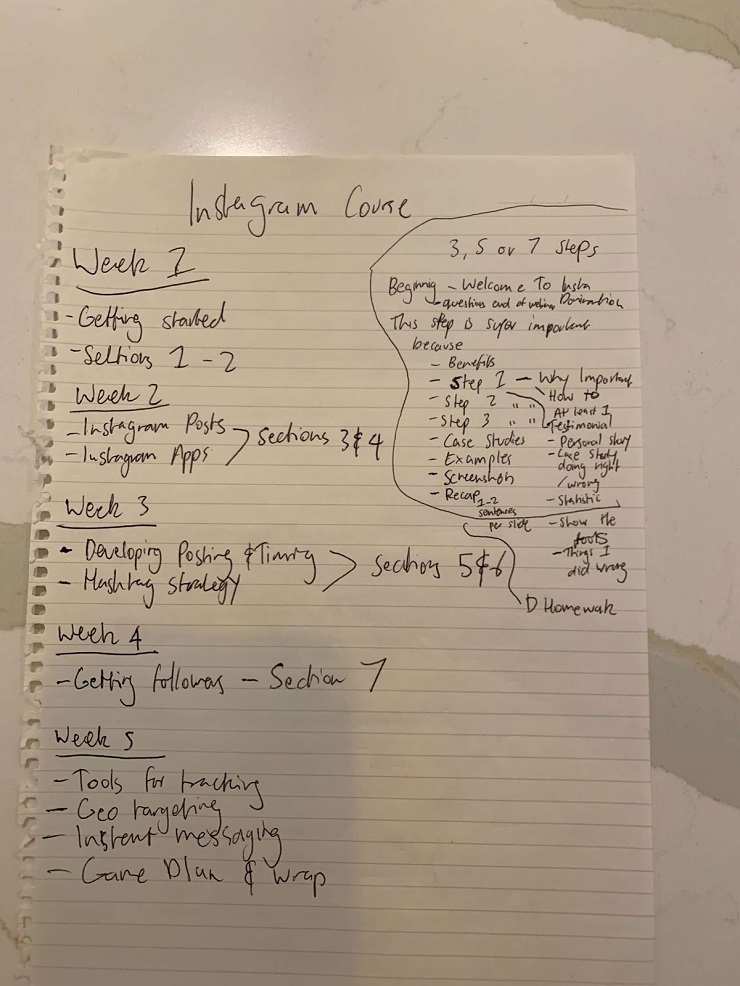
The Meat
Next, after you’ve outlined the broad concepts that your course will cover, you’ll want to layer in “the meat” between the bones.
Again, just like any good outline, this shouldn’t be a novel. Keep your content short and sweet, giving yourself enough prompts to jog your memory.
Add in examples, links, anecdotes, and numbered steps—anything that helps teach the “how to” and not just stopping at the “what and why.” This is very important when developing an online course. If you’re promising to teach somebody how to do something, then your lessons ought to actually show them step-by-step how to do the thing—not just talk about the thing.
The Lesson Structure
Here’s a tried-and-true framework that Foundr uses as a baseline to structure the content of each individual course lesson.
- What: In this lesson, I’m going to walk you through XYZ…
- Why: Why is this important?
- What if: What happens if you skip this step, or don’t consider this?
- How: Walk them through actually how to do the thing…
- Action step: End each lesson with an exercise or something actionable.
Emphasize the “How”
As mentioned, the “how” tends to be the trickiest part. It can come in many forms, depending on what you’re teaching.
Your “how” might include:
- A live demonstration
- A case study examining a real-life scenario, with commentary on each step
- A step-by-step tutorial
- Screenshare walkthrough
- 3-4 examples that illustrate key points
- 10 actionable tips on how to do that thing well
- A virtual simulation of the real experience
- A recorded two-person conversation about the topic
- Over-the-shoulder footage of you actually making something
You’ll have to put on your teaching hat and make sure you think critically about the “how.” Ask yourself, “What’s the best way for this skill/step to be shown? How would I like to be taught this if I were in my students’ shoes?”
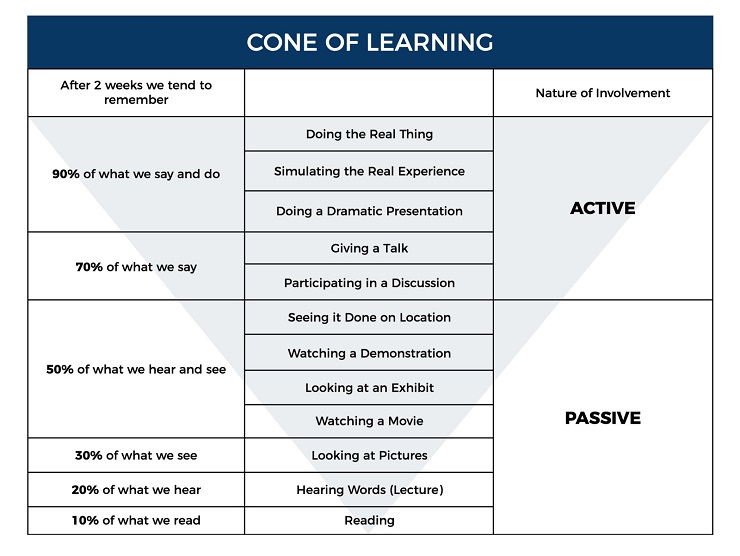
3. Decide the Length of Your Online Course
Each course topic is a unique beast. Your online course can be as long as a piece of string—in other words, as long as it needs to be to effectively teach.
Some online course platforms encourage bite-sized learning like Skillshare, in which classes are anywhere from 30-60 minutes in length. The expectation here is that students are likely to take multiple classes in a month and practice micro-skills through project-based learning. For example, learning the basics of Adobe After Effects by animating a 2D cartoon character. Or upskilling in graphic design by creating a poster of your favorite rock band.
Other course publishers like Foundr, or the variety of instructors found on Teachable, tend to have much more in-depth courses available, anywhere from two hours to 10 hours long.
This is because the course topics here tend to be more involved. As an example, these four Foundr courses below are all about how to start an entire business from the ground up and build it into something profitable, which requires a much deeper learning experience than 30 minutes of video.
- Start & Scale Your Online Store with Gretta van Riel – 10+ hours
- 60-Day Startup with Mitch Harper – 5 hours
- Instagram Domination with Nathan Chan – 11+ hours
- Rapid Course Formula with Nathan Chan & Zack Kinslow – 8 hours
It’s entirely up to you how much value you want to provide, and how much detail is involved in teaching your particular skill. That said, we encourage you to have a think about how macro or micro your topic might be, and that will help give you a ballpark of overall course length.
The 6×6 Method
The Foundr education team uses a quickstart course structure called “The 6×6 Method” as a jumping-off point, which entails:
- 6 “modules”
- 6 video lessons within each module
This guideline is not followed religiously of course, because every topic presents a unique challenge and requires different levels of depth. But it’s a good place to begin as you’re developing your online course outline.
Ideal Video Length
Another common question you might be thinking through is, “How long should each of my video lessons be?” The truth is, there is no perfect length for online course lessons. However, you can think of this like any online video, and look at the data.
Some studies have shown that there is a psychological drop-off after 10 minutes of a lecture. There are different takes on this, of course, and you’ll have to think about who your audience is and how long they need in order to effectively absorb and learn how to do the thing you’re teaching.
But a good rule of thumb when it comes to online courses is to keep your video length under 10 minutes each. The engagement decreases as the video length increases.
Iterating Your Product
Remember, you can always add to your online course later with additional lessons. This first version doesn’t have to be (and surely won’t be) 100% perfect.
As an entrepreneur, you should think of your online course like a tech product, and get comfortable iterating. Your “MVP” (minimum viable product) version can be a bit leaner when you first launch. Just make sure it covers the 3-5 pain points you uncovered during your validation process.
Then, after you make some sales and gather learnings from customer feedback, you can make improvements and release a new-and-improved version later.
As an example, Foundr’s original online course ‘Instagram Domination’ was initially a slide deck screen-recording with voiceover, all captured with Nathan Chan’s laptop in 2015. Chan added to the course over the years, little by little, with new videos as he gathered new learnings himself. Ultimately in 2020, Nathan and the Foundr team decided to completely reboot the Instagram course with higher video production value, once enough demand had built up. This is the fifth iteration of the course, but it all comes back to those pain points people were asking about.
All the more reason to have a strong outline. If your educational scaffolding is well thought-out from the beginning, you can continue to add more meat to the bones while still keeping your overall student experience cohesive.
4. Produce Your Online Course
Once your outline is dialed in after 3-6 weeks of content development, it’s time to produce your online course! This may involve shooting video, or screen-recording on your computer.
There are a number of production best practices that you can follow on a bootstrapped budget, to ensure that your finished product is high-quality and educationally valuable, without costing a fortune.
We won’t go into all the details in this article, because this is meant to be about developing your online course content. But if you’re looking to dig deeper into the A-to-Z process of producing your course, building your audience, and launching your course successfully, consider enrolling in Foundr’s training program Rapid Course Formula.
This in-depth online course on how to make an online course is taught by Foundr’s CEO Nathan Chan, as well as yours truly, Foundr’s head of education production.
In Rapid Course Formula, you’ll learn the complete step-by-step process of how to:
- Identify your online course idea
- Validate your course topic to virtually guarantee that it will succeed
- Build your audience before you launch
- Develop your course content & produce it at a professional quality, for any budget
- Plan out your marketing launch strategy
- Successfully launch your course to sales
- Plus, a litany of exclusive bonuses to speed up your results even more
We’ve spent countless hours of development and production to bring this course to you, and it embodies a collective 10 years’ experience creating and selling online courses successfully.
And now, we’re making all this private knowledge available to you on a silver platter.
To give you a little taste of our Rapid Course Formula, we’ve put together a FREE Masterclass where we teach you how to create a 7-figure course from scratch. Check it out here.
We hope you enjoy, and get tons of value from it! If you have any questions about Rapid Course Formula, please feel free to comment on this blog post below.

